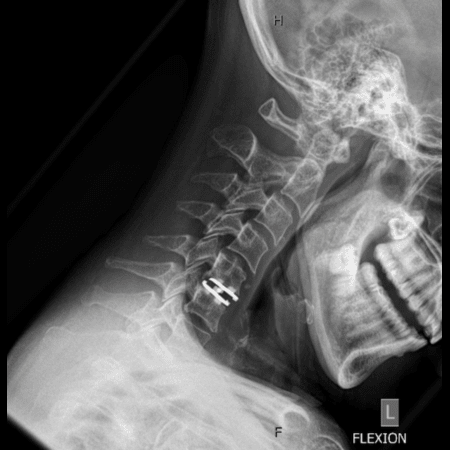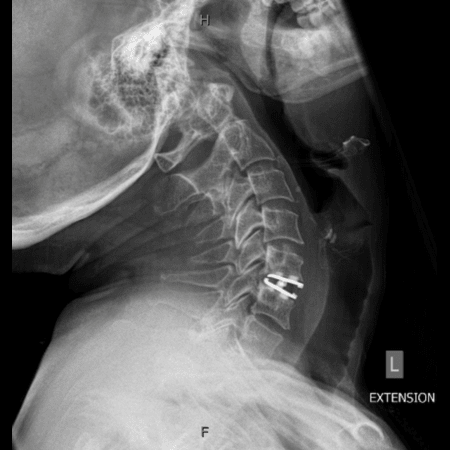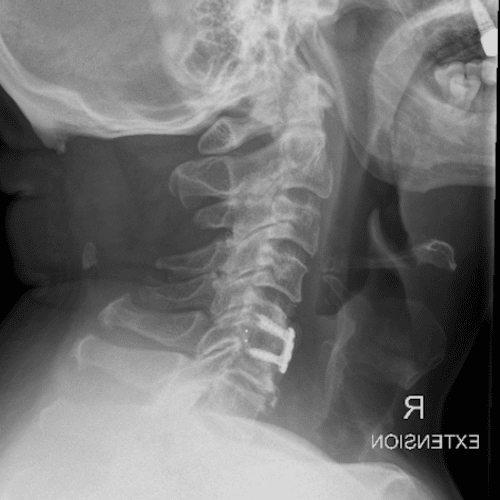Cervical Disc Replacement
Cervical disc replacement (CDR) is a type of surgery designed to relieve pain, weakness, and/or numbness caused by a compressed nerve or spinal cord in the neck. The aim of the surgery is to relieve pressure from the nerve and/or spinal cord in the neck to relieve pain and improve function, with the view to getting you back to doing what you love.
The discs in your neck are like cushions between the bones (vertebrae) of your spine. When one of these discs becomes worn out or damaged, it can press on the nerves, causing pain, numbness, or weakness that might travel down your arms.
Cervical disc replacement is often preferred over spinal fusion for several key reasons, especially when considering the benefits of maintaining natural movement and reducing long-term risks. Here’s why:
Preservation of Motion
Disc Replacement: The artificial disc is designed to mimic the natural movement of your spine. This means after surgery, you can still move your neck more naturally, as the replacement disc allows for bending and twisting similar to how your original disc would.
Fusion: Spinal fusion surgery involves permanently connecting (fusing) two or more vertebrae together. While this can effectively eliminate pain from the damaged disc, it also eliminates movement at the fused segment. This loss of motion can sometimes lead to stiffness in the neck.

Disc Replacement – Flexion

Disc Replacement – Extension
* Movement through the cervical spine demonstrated on X-rays with Cervical Disc Replacement

ACDF – Flexion

ACDF – Extension
* Movement through the cervical spine demonstrated on X-rays with ACDF
Reduced Stress on Adjacent Discs
Disc Replacement: Because disc replacement maintains normal movement in the neck, it puts less stress on the discs above and below the surgery site. This helps to reduce the risk of wear and tear on these adjacent discs over time.
Fusion: When two vertebrae are fused together, the movement that previously occurred at that segment has to be absorbed by the discs above and below it. This increased stress can lead to problems in these adjacent discs, a condition known as “adjacent segment disease.”
Faster Recovery
Disc Replacement: Since the procedure is designed to maintain normal spine movement, recovery can be quicker. Patients often experience less postoperative pain, less swallowing difficulties, and a faster return to daily activities compared to fusion.
Fusion: Recovery from spinal fusion can take longer because the bones need time to heal and fuse together, which can take several months. During this time, patients may need to wear a neck brace and avoid certain activities.
Lower Risk of Future Surgeries
Disc Replacement: Because the surgery preserves motion and reduces stress on other parts of the spine, there’s a lower likelihood of needing additional surgeries in the future to address problems in other discs.
Fusion: The increased stress on adjacent discs after fusion surgery can lead to degeneration in those areas, which might require further surgeries down the line.
Patient Satisfaction
Disc Replacement: Many patients report high levels of satisfaction with disc replacement because it offers pain relief while allowing them to maintain normal neck motion.
Fusion: While fusion can be very effective in relieving pain, some patients might find the loss of movement in the neck limiting, especially if multiple segments are fused.
Surgery
A small (1-inch) incision is made at the front of the neck. The cervical spine is accessed by gently dissecting between the tissues of the neck without dividing them, and they are gently retracted to allow direct visualisation of the disc.
Removing the Damaged Disc
After confirming the correct disc level, the damaged disc that’s causing your symptoms is removed under high powered microscopic magnification. This step is crucial because the damaged disc is often the source of nerve compression and pain.
Relieve Compression from the Nerve and/or Spinal Cord
Using high-powered microscopic magnification, the spinal cord and exiting nerves are visualised and freed up from any compression by disc fragments or bone spurs.
Inserting an Artificial Disc
After the damaged disc is removed, it’s replaced with an artificial disc. This new disc is made of durable metal and plastic and is designed to mimic the natural movement of your spine. The disc is sized appropriately for each person. The artificial disc allows your neck to maintain its flexibility.
Recovery
After the surgery, most people spend one night in the hospital. Recovery times vary, but most patients have resolution of their nerve pain immediately. Most people note some minor issues with swallowing over the first few days after surgery, and the neck may feel tight for the first 3-4 weeks. A soft collar is provided for comfort, but we encourage you to remove the collar and move the neck as comfortable. Avoidance of strenuous physical activities such as lifting and overhead activities is required postoperatively to ensure the implant bonds securely. Specific postoperative instructions are provided by A/Prof Buckland’s team.
Summary
Cervical disc replacement is preferred (where feasible) because it preserves the natural movement of the neck, reduces the risk of problems in other parts of the spine, often leads to a faster recovery, and lowers the chances of needing additional surgeries in the future. It’s a great option for people who want to maintain their neck’s flexibility and avoid the potential downsides of fusion. However, the best choice depends on individual circumstances, so it’s important to discuss the options with A/Prof Buckland.

